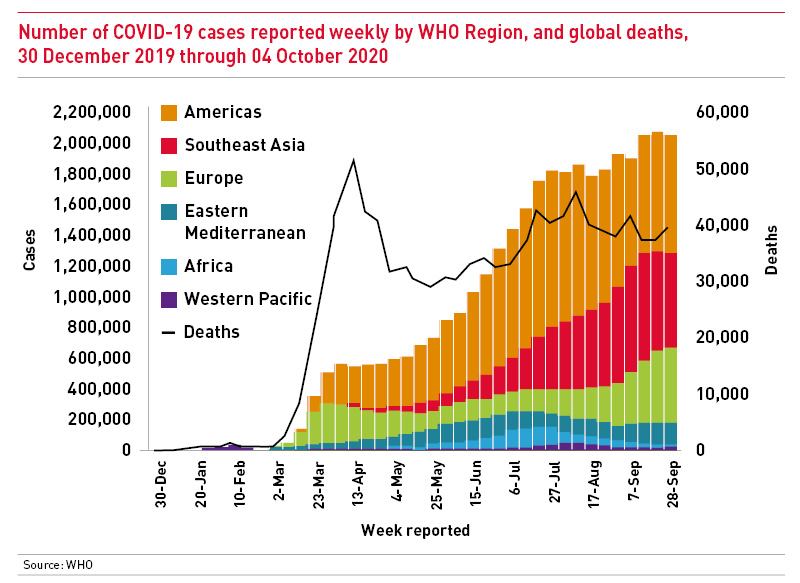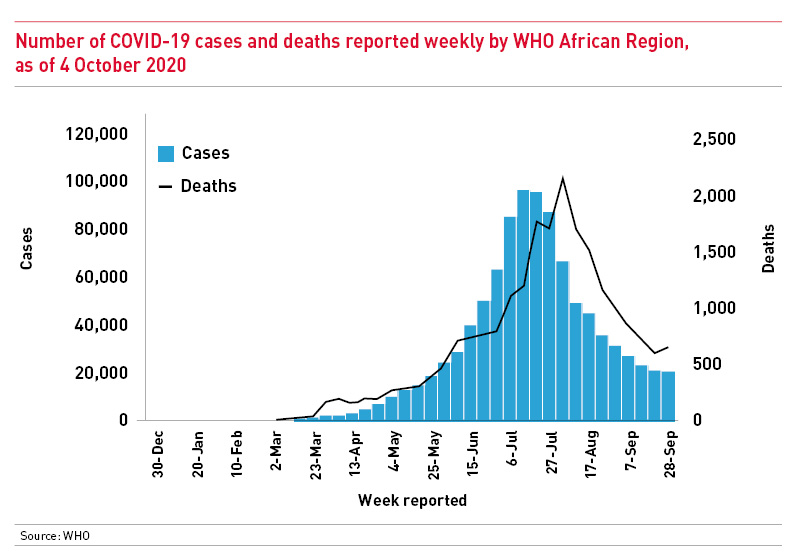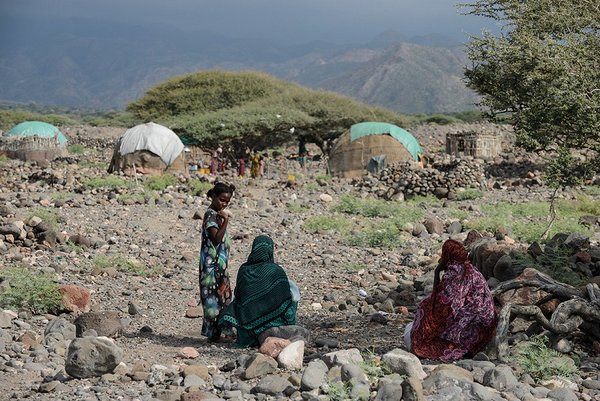 Download this article in magazine layout
Download this article in magazine layout
- Share this article
- Subscribe to our newsletter
COVID-19 research – what really matters
The COVID-19 paradox is fascinating and relevant to development strategies in modern times. How I define this paradox is as follows:
There is an apparent reversal with COVID-19 of the usual disease expression-impact paradigm globally between rich and poor countries, with fewer negative outcomes from the pandemic reported in so-called less-developed low-income nations (e.g. most African nations) compared to more-developed high-income nations, such as the UK and the USA, with some notable exceptions like New Zealand, which may relate more to geography and politics than to any other factor.
The common explanation for this paradox is that less developed settings are unable to report adequately, but this “belief”, or perhaps “prejudice”, is confounded by time and the trend data, which is not influenced by the reporting effort (see Figures below). What seems to be at work in poorer less-developed countries is a slower and lower overall infection rate, case incidence rate, case fatality rate and overall mortality. This is best exemplified by Africa, which has the highest proportion of low-income countries of any continent.


Teasing out the risk factors for emergence, spread and impact is complex, but some obvious differences and correlates between countries can be gleaned from examining factors like the degree of development, air travel indices, population distribution and networking, urban-rural proportions, geographies, socio-political and agro-ecological systems, age structures and specific co-morbidities such as obesity and many other parameters over the period of the pandemic. What is clear is that the virus has caused havoc in countries with higher Global Health Security indices and high expenditure per capita on health. There is also a reversal of fortunes, with population benefit being more rural, compared to urban and suburban settings, both in terms of mental health and risk of COVID-19 disease. Normally, health services are more accessible and advanced in urban settings and there is a gradient of health risks in face of epidemic diseases, rising into the remoter, poorly serviced rural locations in a country.
COVID-19 – the “treatment”: lockdown
The general response to the epidemic was based on a “policy” called “lockdown” which amounted to an almost gut reaction by Public Health and politicians to the rapid emergence and inability to treat or prevent the infection and its clinical impacts. The objective was to lower the rate of infection and prevent an unmanageable crisis particularly in the health delivery systems, whilst the large conventional health science community caught up with understanding the pathogenesis and epidemiology, modelling scenarios, finding appropriate treatments of cases and developing vaccines. The modellers and vaccinators have been the most vocal and publicised elements in Public Health communication. Benefits of lockdown were more evident in highly organised societies, based on rapid suppression of infection rates and alleviation of pressure on intensive care units, and enabled by a higher level of community adherence to political dictat and some belief in Public Health messaging, and, perhaps most importantly, sufficient wealth to buffer socioeconomic costs. In contrast, in this respect, less developed countries have suffered greatly, more from the unpredictable socioeconomic effects and health challenges generated by this policy than from any other factor. It is still early days for a retrospective analysis of impacts from the disease and different responses across the world and for identifying lessons learned.
COVID-19: where did it come from and why?
The speculation on origins of COVID-19 follows a similar pattern to SARS, which occurred in 2003, in a similar region of the world. Despite a considerable research effort, we still do not have a known animal reservoir for SARS, and nothing is proven yet for SARS-CoV-2. SARS burned out with only a few hundred deaths and this took some focus away from further prevention of this clearly dangerous situation in Southeast Asia with respect to emerging coronavirus infections. The genetic origins of both these viruses is likely in the animal kingdom and bats are given the greatest prominence through researchers having isolated many SARS-like viruses, especially from horseshoe bats, but still no actual virus source has been found. In SARS, proven infection of farmed wildlife species used for fur or the food industry created some speculation on these species as a proximate source but this was not proven other than for infection in one or two cases. No further zoonosis with SARS has been reported, which suggests that there was no reservoir species.
Anthropozoonosis, the transmission of a virus from people to animals, is possible for both SARS and SARS CoV-2, and many species have been shown susceptible, but this is not proof of established zoonosis. The term zoonosis is often used to explain COVID-19, but there is actually no evidence to confirm an ongoing zoonosis. It is clearly a human disease, and the origin may simply be a unique spill-over event. The association of Wuhan Wet Market with animals may be spurious, as humans could equally have brought the virus into the market and spread it on surfaces. No animal was found with the virus. To have two viruses of a similar nature enter the human population and establish epidemics is probably beyond chance. There must be some specific drivers for this happening, and presumably, these remain in place. Any aspect of human behaviour, industry or practice creating risk of coronavirus emergence must be discovered and addressed for the sake of future human health and the economy, given the massive global impact of COVID-19.
In the context of rural development and disease, the risks of urbanisation need to be taken more into account in the future, as must the possible role of food systems in the emergence of such pathogens. If a wildlife species source is proven, the role of rural populations in exploiting wildlife for farming or trade and consumption will need to be examined very critically. It is notable that wildlife farming was promoted as a poverty reduction policy in China in the past two decades, which is coincident with the emergence of coronaviruses, and this was a similar pattern for the emergence of the “Bird flu” zoonotic diseases which occurred after a rapid growth in the duck and poultry sector in China over a similar timeframe.
Richard Kock is a Professor at the Royal Veterinary College, University of London, United Kingdom.
Contact: rkock@rvc.ac.uk
References and further reading:
Littcovid 2020
https://www.ncbi.nlm.nih.gov/research/coronavirus/
Haider N. et al. (2020a). The Global Health Security index and Joint External Evaluation score for health preparedness are not correlated with countries’ COVID-19 detection response, time and mortality outcome. Epidemiology and Infection 1–8.
https://doi.org/10.1017/S0950268820002046
Haider, N., et al. (2020b). Passengers' destinations from China: Low risk of Novel Coronavirus (2019-nCoV) transmission into Africa and South America. Epidemiology and Infection, 148, E41.
https://doi.org/10.1017/S0950268820000424
Kock, R. et al. (2020): 2019-nCoV in context: lessons learned? Lancet Planet Health 2020. Published Online February 6, 2020.
https://doi.org/10.1016/S2542-5196(20)30035-8
Bas B. Oude Munnink et al. Jumping back and forth: anthropozoonotic and zoonotic transmission of SARS-CoV-2 on mink farms.
https://doi.org/10.1101/2020.09.01.277152
WHO (2020) WHO.int/situation analysis accessed 08/10/2020.
https://www.who.int/docs/default-source/coronaviruse/situation-reports/20201005-weekly-epi-update-8.pdf





Add a comment
Be the First to Comment